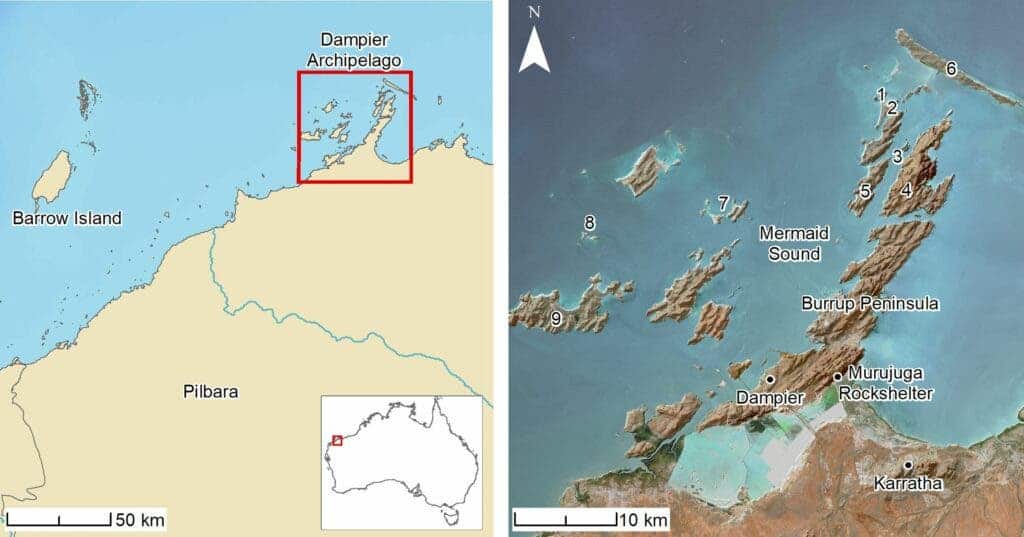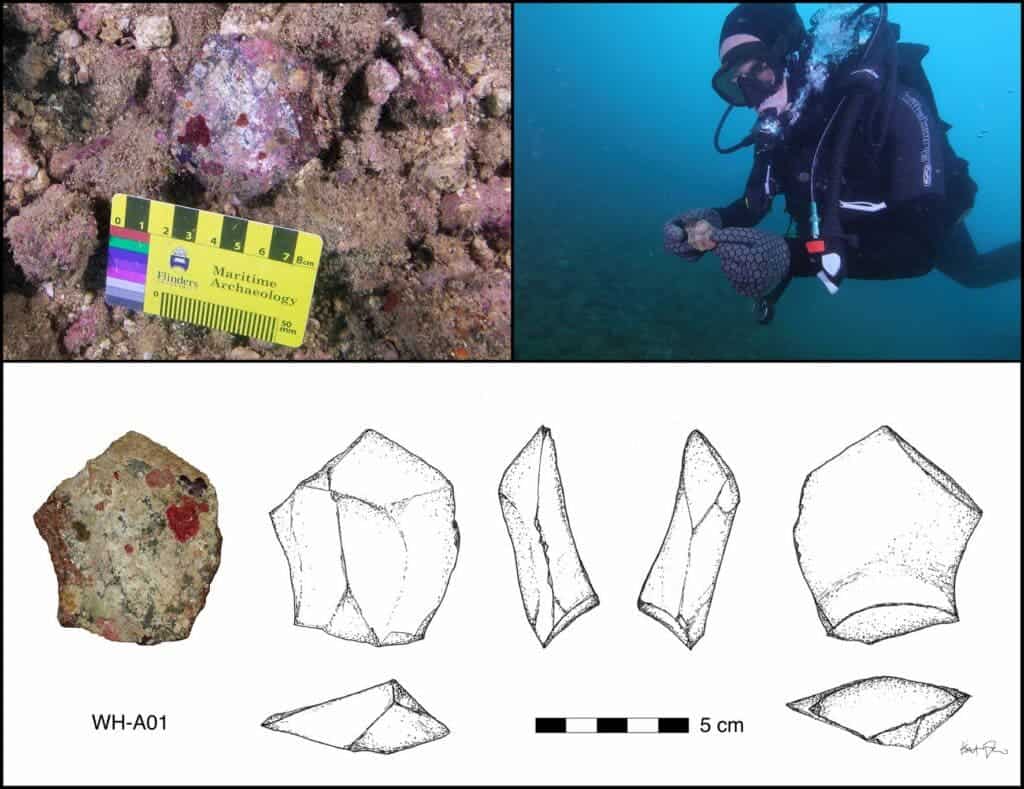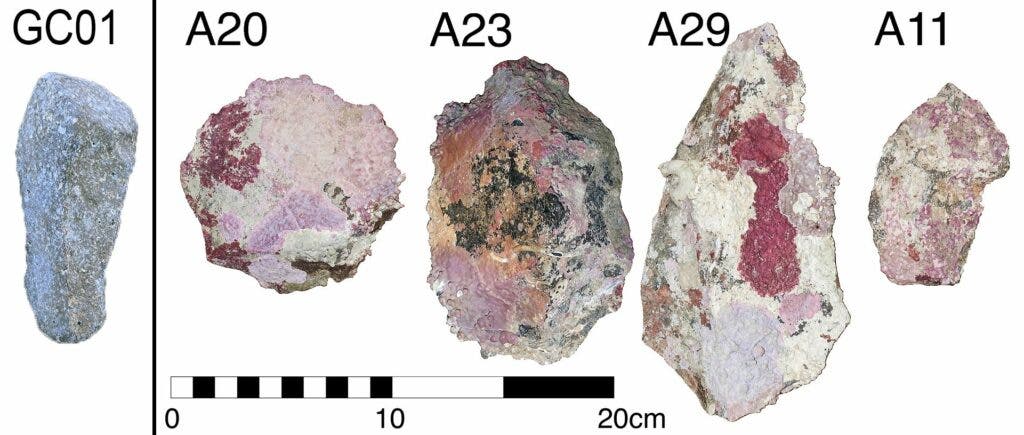Researchers have uncovered a trove of Aboriginal artifacts in two underwater archaeological sites off the Pilbara coast in Western Australia. The site represents the oldest known underwater archaeology in Australia.
The discovery of the sites, known as Cape Bruguieres and Flying Foam Passage, sheds new light on the Aboriginal way of life. Thousands of years ago, at the end of the last Ice Age, today’s submerged landscape was dry land due to lower sea levels at the time.
The Land Down Water

Even to this day, the submerged sites are part of an area known as Sea Country to indigenous Australians — a testament to the deep historical and cultural connections to these underwater sites.
“Australia is a massive continent but few people realise that more than 30% of its land mass was drowned by sea-level rise after the last ice age. This means that a huge amount of the archaeological evidence documenting the lives of Aboriginal people is now underwater,” Jonathan Benjamin, Associate Professor of Maritime Archaeology at Flinders University, said in a statement.
“Now we finally have the first proof that at least some of this archaeological evidence survived the process of sea level rise. The ancient coastal archaeology is not lost for good; we just haven’t found it yet. These new discoveries are a first step toward exploring the last real frontier of Australian archaeology,” he added.
The researchers employed geophysical surveys that mapped the area around the Dampier Archipelago, and conducted archaeological investigations with a team of divers on-site between 2017-2019.

A total of 269 artifacts were identified at Cape Bruguieres at depths down to 2.4 meters below modern sea levels. The site is believed to be at least 7,000 years old, judging from radiocarbon dating.
At the 8,500-year-old Flying Foam Passage site, divers found an underwater freshwater spring 14 meters below sea level.
What’s fascinating is that hundreds, if not thousands, of such sites may exist further out into the ocean. At one point, dry land stretched out 160 kilometers (100 miles) from the current shoreline.

Although it’s difficult to imagine what the landscape was like more than 8,000 years ago, it’s likely that there were plenty of resources to support many ancient Aboriginal communities, the researchers believe.
“These territories that are now underwater harboured favourable environments for Indigenous settlements including freshwater, ecological diversity and opportunities to exploit marine resources which would have supported relatively high population densities” says Dr. Michael O’Leary, a marine geomorphologist at The University of Western Australia.
The two sites might just be the tip of the iceberg, with many more waiting to be discovered, underscoring the urgency of stronger legislation meant to protect and manage these underwater heritage sites.
“Managing, investigating, and understanding the archaelogy of the Australian continental shelf in partnership with Aboriginal and Torres Strait Islander traditional owners and custodians is one of the last frontiers in Australian archaeology” said Benjamin.
“Our results represent the first step in a journey of discovery to explore the potential of archaeology on the continental shelves which can fill a major gap in the human history of the continent,” he said.
The findings were described in the journal PLOS ONE.



